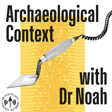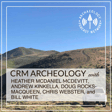
The Iceman Ötzi P2 - Examining 5000-year-old survival equipment - With Dr Albert Zink (S01E08)
Welcome back to another episode of 23 minutes archaeology, where we continue with part 2 of or look at Ötzi, the prehistoric Iceman. Because soon after the recovery of the mummy, and its significance was understood, the site of his discovery at the Tisenjoch-mountain was extensively researched. In the process, many parts of Ötzis equipment were found and uncovered from the ice.
And for us archaeologists, these finds are truly invaluable. Because as you may remember from last episode, Ötzi was not formally buried, but unexpectedly torn from life. Additionally, not only his body, but also his clothing and equipment was frozen in ice and therefore preserved over the millennia. This gives us the unique opportunity to get an unaltered picture of the different objects used in everyday life, over 5000 years ago. Afterwards we continue our conversation with Dr. Albert Zink and also focus more on the tattoos discovered all over Ötzis body.
Reverences:
- Maixner et al. (2018), The Iceman's Last Meal Consisted of Fat, Wild Meat, and Cereals
- Fleckinger Ed. (2011), Ötzi 2.0: Eine Mumie zwischen Wissenschaft, Kult und Mythos
- Möckli (2011), Medizinische Untersuchungen und Ergebnisse an Ötzi
website: https://23minarch.com
Support: patreon.com/23minarch





